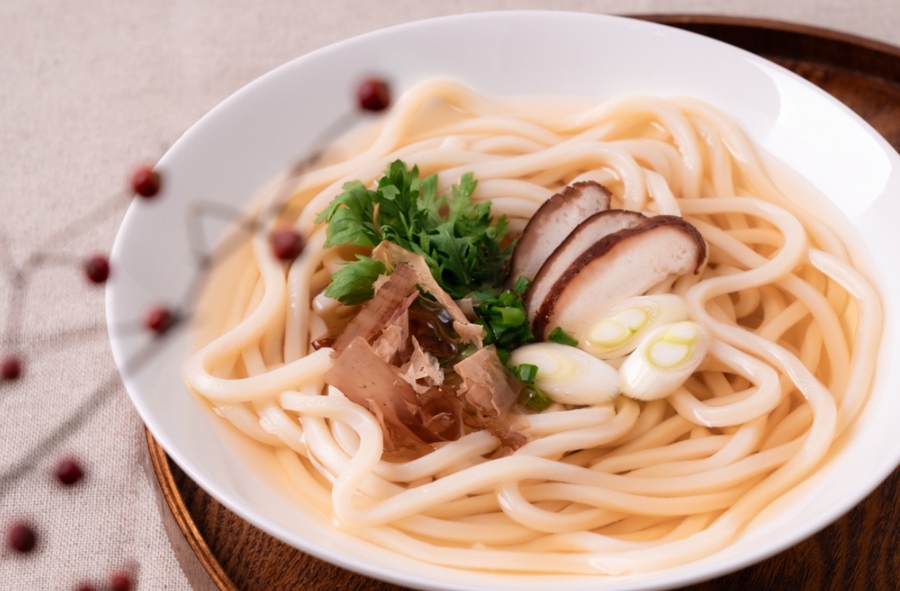Newsroom
The Essence of Texture – How Nenia Udon Noodles Are Made
2025.09.30How far can udon noodles transform? Broth-based udon, fishcake udon, fried tofu udon, tempura udon, curry udon, stir-fried seafood udon, basil salad udon, black bean sauce udon, spicy seafood udon—the possibilities are endless. Among these countless recipes, there is one product that has continued to earn steady love: Nenia Korean Wheat Udon Noodles.
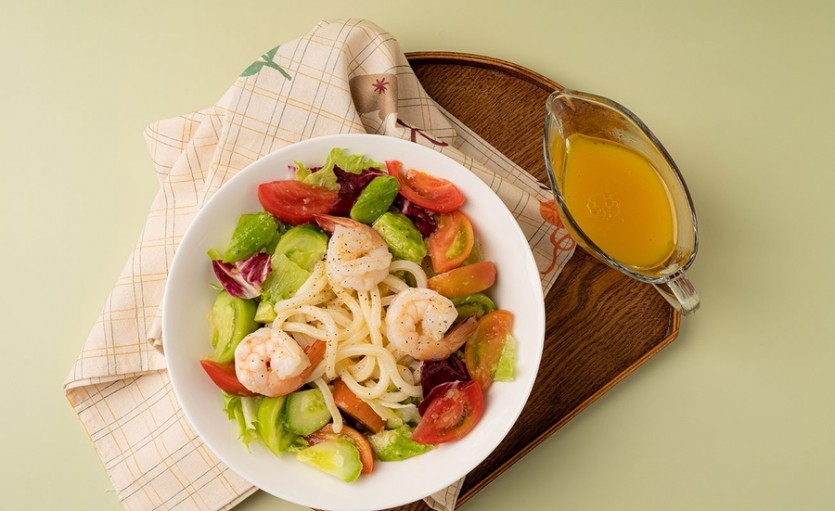
△ Udon Salad made with Nenia Korean Wheat Udon Noodles (Photo: Nenia)
Visiting Nenia’s Production Site: Chunil Foods Co., Ltd.
The Nenia Webzine Editorial Team visited Chunil Foods Co., Ltd. in Gwangcheon-eup, Hongseong County, South Chungcheong Province. The purpose was to cover the production site where Nenia products are made and share it with consumers. At the entrance of the office, a welcome sign greeted Nenia, and the Product Development Team Leader warmly received us.
Mr. Lee Cheol-ho, Product Development Team Leader, has dedicated more than 40 years to the field of noodle development. As he introduced the company, he naturally went on to explain the characteristics of frozen noodles and the history of udon in Japan and China. From his explanations, we could sense both his expertise and his pride in his work.
Chunil Foods was founded in December 1974 and has grown into a leading company specializing in frozen fried rice and noodles, producing approximately 180 million meals annually. The company employs about 200 staff members, manufactures 313 different products, recorded sales of 110 billion KRW in 2024, and supplies products to more than 300 partner companies.
Chairman Chun Dong-han, the founder of Chunil Foods, had many opportunities to encounter the food business in Japan while working in the fisheries sector on diplomatic assignments. Chunil Foods is known as the pioneer of imitation crab meat (crab sticks) in Korea. At a time when dumpling-making machines and frozen dumplings were not yet available in the domestic market, Chairman Chun imported a dumpling machine from Japan, produced dumplings, and steamed them for sale—earning recognition as the forerunner of mechanized dumpling production in Korea.
The Secret of Chewiness: Multi-Hydration Dough
Mr. Lee Cheol-ho, Team Leader at Chunil Foods, explained the characteristics of noodles depending on their shapes and production methods. He then went on to describe the manufacturing process and distinctive qualities of Nenia Korean Wheat Udon Noodles.
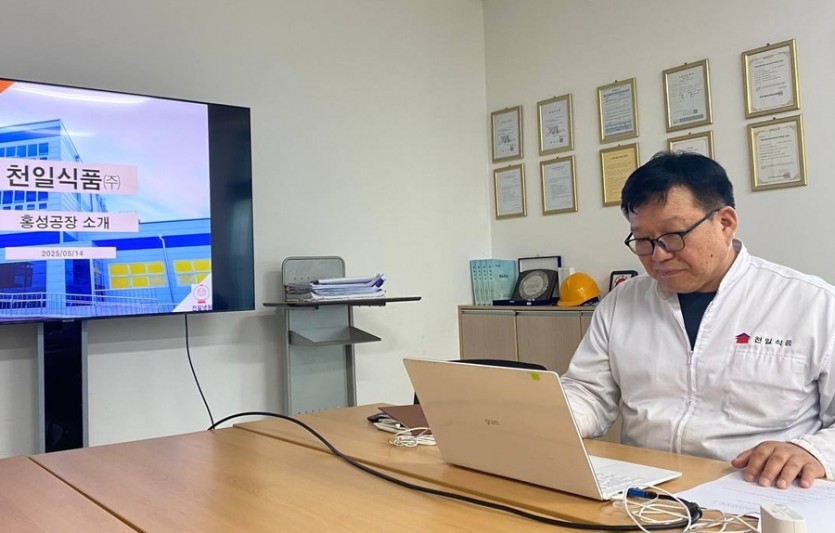
△ Mr. Lee Cheol-ho, Product Development Team Leader at Chunil Foods Co., Ltd., explains the characteristics of noodles and noodle-making in detail. (Photo: Nenia)
The secret behind the chewy and springy texture of Nenia Korean Wheat Udon Noodles lies in the multi-hydration vacuum kneading method and the use of potato starch. The term multi-hydration refers to the process of adding water several times. Mr. Lee explained, “When water is added to wheat flour and kneaded, a network-like gluten structure is formed, which provides the noodle’s framework.” The higher the water absorption rate, the better the noodle quality. However, higher water content can also make production more difficult and shorten shelf life. Therefore, it is necessary to adjust the hydration rate according to the intended purpose and noodle-making equipment. The vacuum kneading method is a technique in which the dough is processed under vacuum to improve water penetration. By finding the right level of water absorption during kneading, it becomes possible to create chewy, high-quality noodles with excellent texture—without the use of chemical additives. The resulting product, made using a rapid freezing system, is Nenia Korean Wheat Udon Noodles.
The Core of Frozen Noodle Technology: Rapid Freezing
Why is the rapid freezing system so important? Mr. Lee explained, “The key to frozen noodles lies in how quickly they pass through the freezing point.” When moisture particles are evenly distributed and rapidly frozen, the noodles retain their flavor. On the other hand, if they freeze too slowly, moisture particles grow larger, damaging the structure and causing uneven taste.
For quality assurance, the main raw ingredients used in Chunil Foods’ products—wheat flour and starch—undergo a three-step inspection process: raw material testing, sensory evaluation of finished products, and additional objective testing using machines.
“The products I make are like my own children”
Chunil Foods is known as the Korean noodle company with the highest volume of exports overseas. Guided by the mission, “We enrich the world by supporting our customers’ cooking,” the company has consistently pursued product research and development, firmly establishing itself in the frozen food market. The journey was not without challenges. During the “dumpling crisis” of 2004, most of the 12 executives had to resign, and the company later suffered a fire. Management became difficult for a time, but with the launch of frozen fried rice, Chunil Foods experienced a second leap forward.
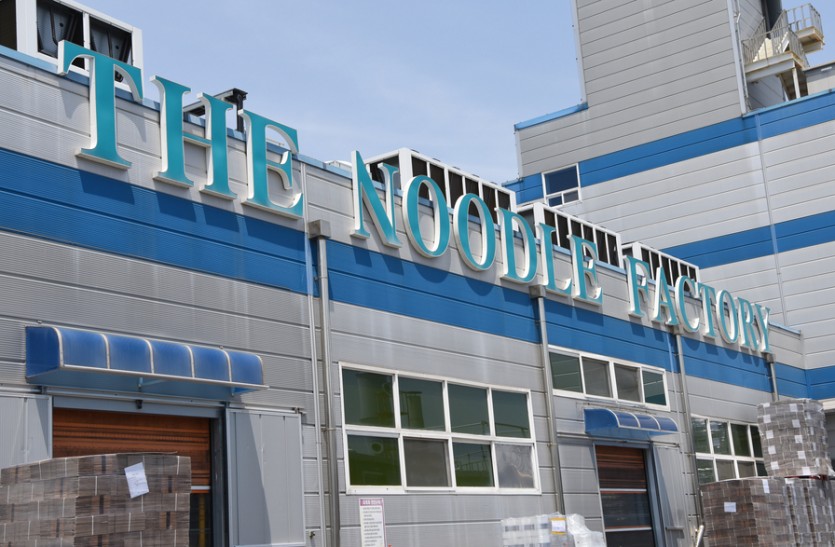
△ Part of the Cheonil Foods factory(Photo: Nenia)
Mr. Lee Cheol-ho takes great pride in having contributed to the company’s growth. Annual sales of buckwheat noodles were about 80 million KRW in the early years (2012), but as of May 2025 they have reached 1 billion KRW. Production facilities, which began with only two lines, have now expanded to eight. This achievement is due to the efforts of all company members. Mr. Lee remarked, “I strive to create products that are respected wherever they go. A product is my face, and it is like my own child. I want to feel proud even if someone who knows me eats it.” This conviction is what guides him in his ongoing product development.
“The value of Nenia carries great social significance”
Mr. Lee Cheol-ho described Nenia as a food company that looks to producers, consumers, and future generations while creating and distributing eco-friendly products. That is the image of Nenia as he sees it. He emphasized that values such as safe food, pesticide-free products, and the use of Korean agricultural ingredients hold great social significance, and he expressed his gratitude for Nenia’s unwavering commitment.
Chunil Foods uses approximately 50 tons of imported wheat flour each day. At Plant 1, raw materials are supplied by pallet units, while the newly expanded Plant 2 operates with an automated silo system. The Hongseong factory produces about 120 different items, and the Incheon factory manufactures airline meals, meat products, and frozen rice dishes. Mr. Lee added that if large-scale wheat users like Chunil Foods were to adopt Korean wheat in production, the national self-sufficiency rate for wheat could increase significantly.
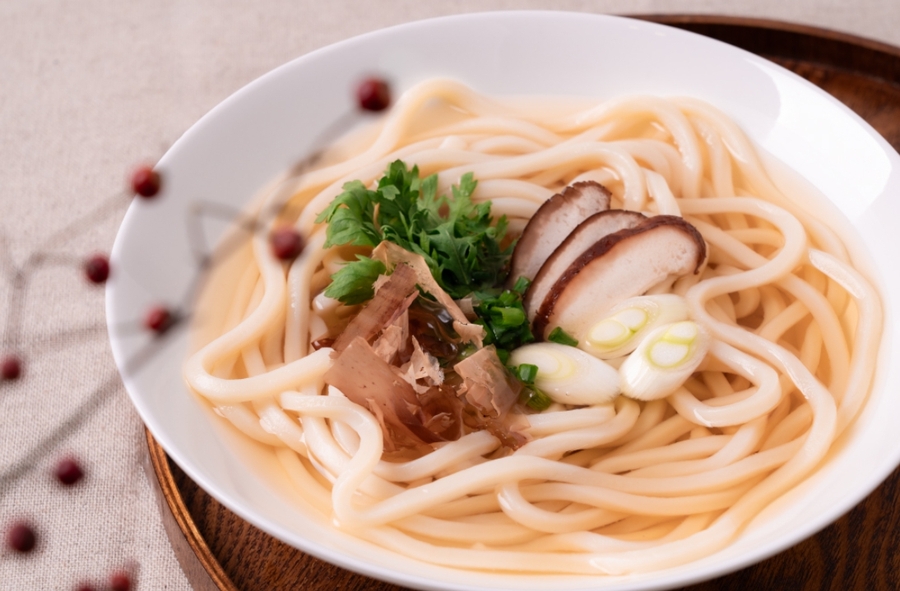
△ Nenia Udon Noodles made with pesticide-free Korean wheat (Photo: Nenia)
Nenia Korean Wheat Udon Noodles are made with pesticide-free domestic wheat as the main ingredient. They are produced without chemical additives and contain no added salt, making them a truly “unsalted” udon. With the use of domestic potato starch and specialized manufacturing know-how, these noodles stand out for their chewy and springy texture.
We encourage you to explore the many possibilities of udon dishes that can be created with Nenia Udon Noodles. As a tip, we also share some key characteristics of noodle-making methods in Japan, China, and Korea as explained by Mr. Lee.
[Tip] Provided by Chunil Foods
The World of Noodles Across Borders
How are noodles made in different countries?
Noodles are made by rolling, pressing, or extruding dough made from wheat flour, rice flour, buckwheat flour, potato flour, and other starches, then cutting or pulling it into long, thin strands. They are typically boiled or fried before eating.
It is believed that noodles originated in Central Asia around 6000–5000 BCE and spread across Asia. While each country has its own noodle-making traditions, noodles commonly symbolize longevity because of their long shape. Below is a brief introduction to representative noodle-making methods in China, Korea, and Japan.
China – Hand-Pulled Noodles (La Mian, Ta Mian)
In China, the method of “pulling noodles” is one of the most iconic. Wheat dough is repeatedly slapped, stretched, and pulled on a board to form long strands. From this technique came la mian of northern China and ta mian of southern China—the origin of the word “ramen.” These noodles are also referred to as shou da mian (hand-pulled noodles).
Shaanxi Province in China is so famous for its noodles that it is often called the “paradise of noodles” and is regarded as the birthplace of Chinese noodle history. What makes the region unique is the presence of alkaline water. This alkaline water plays a key role in tightening the gluten network, which increases both the viscosity and elasticity of wheat flour. Thanks to this, noodle makers are able to perform the seemingly magical technique of pulling dough into noodles that stretch endlessly without breaking.
Korea – Pressed and Extruded Noodles
Why did Korea develop noodle-making methods that involve pressing and extruding the dough? The answer lies in buckwheat flour. Buckwheat, native to Northeast Asia, grows quickly and can be harvested within about two months of sowing. It also thrives in poor soil. When droughts prevented rice paddies from being irrigated, farmers often planted buckwheat instead.
Historical records such as Eumsik Dimibang and Jubangmun from the late 1600s note that buckwheat was already considered a premier ingredient for making noodles. To transform buckwheat into noodles, a special tool was required: the noodle press. Dough was placed inside the press, and with force applied, it was pushed through small holes, producing long strands. This method is called apmyeon (pressed noodles).
Because buckwheat has low viscosity, making it difficult to form elastic dough, the noodle press frequently appears in illustrations from Korea’s past. In some depictions, strong men are shown hanging from the press to force the dough through. This reflects the enduring desire for chewy noodles.
In 1607, the Gyugon Siuibang introduced what is considered the earliest form of kalguksu (knife-cut noodles). Unlike today’s wheat-based kalguksu, these noodles were made from buckwheat dough mixed with starch and hot water to increase viscosity. Later, the Jeungbo Sallim Gyeongje described rolling buckwheat dough thin and cutting it finely “like threads.” This is thought to mark the beginning of the Korean noodle-making method known as jeolmyeon (cut noodles).
Japan – Cut Noodles (Jeolmyeon), Hand-Kneaded Noodles, and Foot-Kneaded Noodles
Japan is a long archipelago stretching east to west, and the two regions are often distinguished by name: the area around Kyoto is known as Kantō, while the area around Osaka is called Kansai. These regions have distinct cultural differences, and Japan’s noodle culture can be represented by soba in Kantō and udon in Kansai.
When speaking of Japanese noodle-making, saying that noodles are “pulled” generally refers to soba. In Kansai, however, udon is notable for its unique foot-kneading method, though hand-kneaded noodles also exist. The most famous example is Sanuki Udon, the pride of Kagawa Prefecture in Shikoku. The dough is kneaded by stepping on it with the feet, maximizing elasticity, and then allowed to mature. Once matured, the dough is rolled out with a wooden pin, flattened, and finally cut into strands before being boiled.
In contrast, soba from the Kantō region is made primarily from buckwheat, a tradition shaped by local climate and farming conditions. Since buckwheat flour has little natural viscosity, it is often mixed with wheat flour, yam, or egg when kneading, in order to increase elasticity. Even here, Japanese soba noodles are ultimately prepared by cutting the dough into strands.


